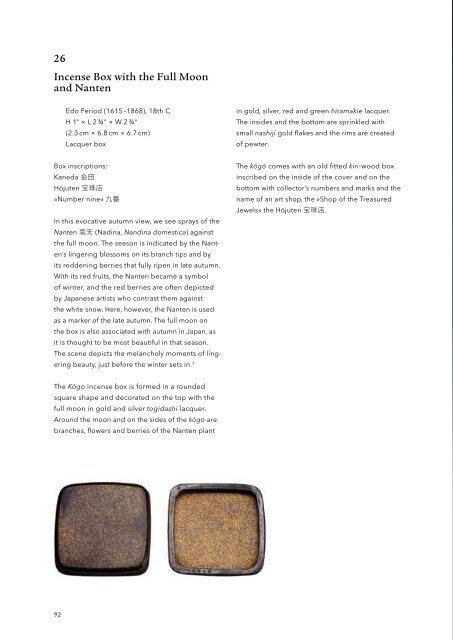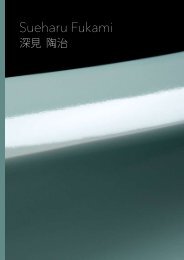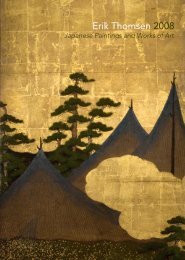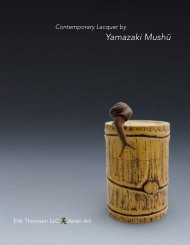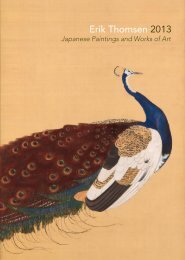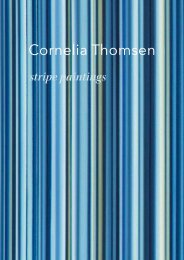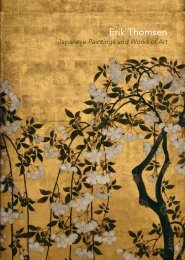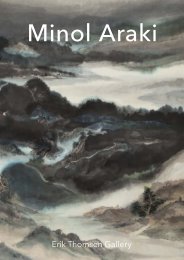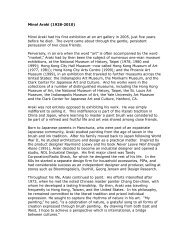View publication (pdf file 6.5 mb) - Erik Thomsen
View publication (pdf file 6.5 mb) - Erik Thomsen
View publication (pdf file 6.5 mb) - Erik Thomsen
- No tags were found...
You also want an ePaper? Increase the reach of your titles
YUMPU automatically turns print PDFs into web optimized ePapers that Google loves.
26Incense Box with the Full Moonand NantenEdo Period (1615 –1868), 18th CH 1" × L 2 ¾" × W 2 ¾"(2.3 cm × 6.8 cm × 6.7 cm)Lacquer boxin gold, silver, red and green hiramakie lacquer.The insides and the bottom are sprinkled withsmall nashiji gold flakes and the rims are createdof pewter.Box inscriptions:Kaneda 金 田Hōjuten 宝 珠 店»Nu<strong>mb</strong>er nine« 九 番In this evocative autumn view, we see sprays of theNanten 南 天 (Nadina, Nandina domestica) againstthe full moon. The season is indicated by the Nanten’slingering blossoms on its branch tips and byits reddening berries that fully ripen in late autumn.With its red fruits, the Nanten became a sy<strong>mb</strong>olof winter, and the red berries are often depictedby Japanese artists who contrast them againstthe white snow. Here, however, the Nanten is usedas a marker of the late autumn. The full moon onthe box is also associated with autumn in Japan, asit is thought to be most beautiful in that season.The scene depicts the melancholy moments of lingeringbeauty, just before the winter sets in. 1The kōgō comes with an old fitted kiri-wood boxinscribed on the inside of the cover and on thebottom with collector’s nu<strong>mb</strong>ers and marks and thename of an art shop, the »Shop of the TreasuredJewels« the Hōjuten 宝 珠 店 .The Kōgo incense box is formed in a roundedsquare shape and decorated on the top with thefull moon in gold and silver togidashi lacquer.Around the moon and on the sides of the kōgo arebranches, flowers and berries of the Nanten plant92 93


